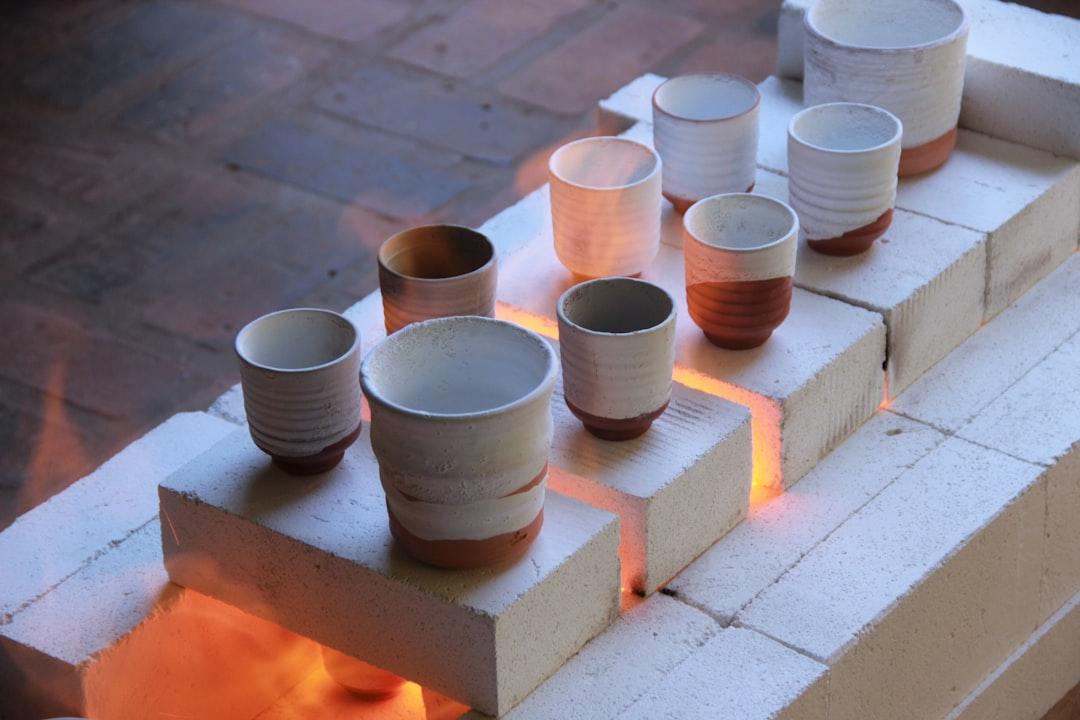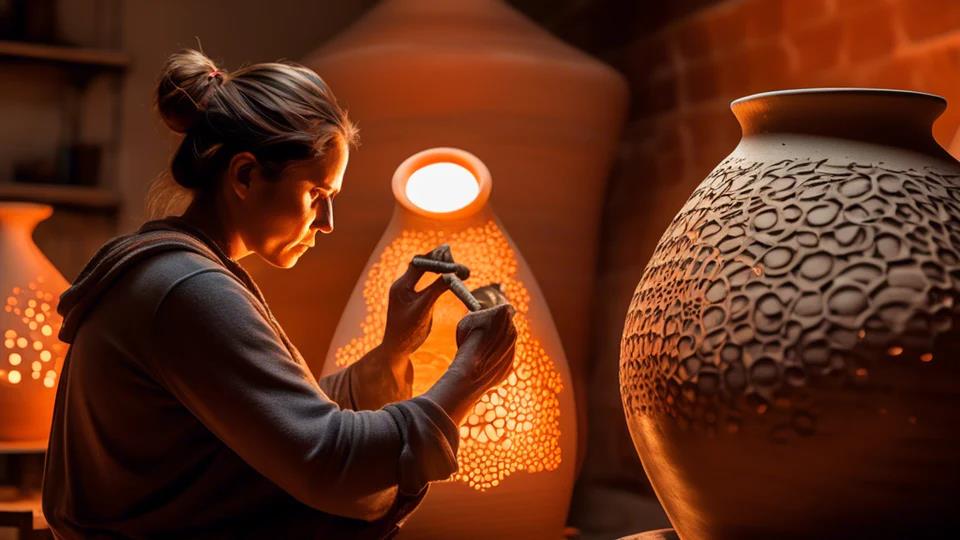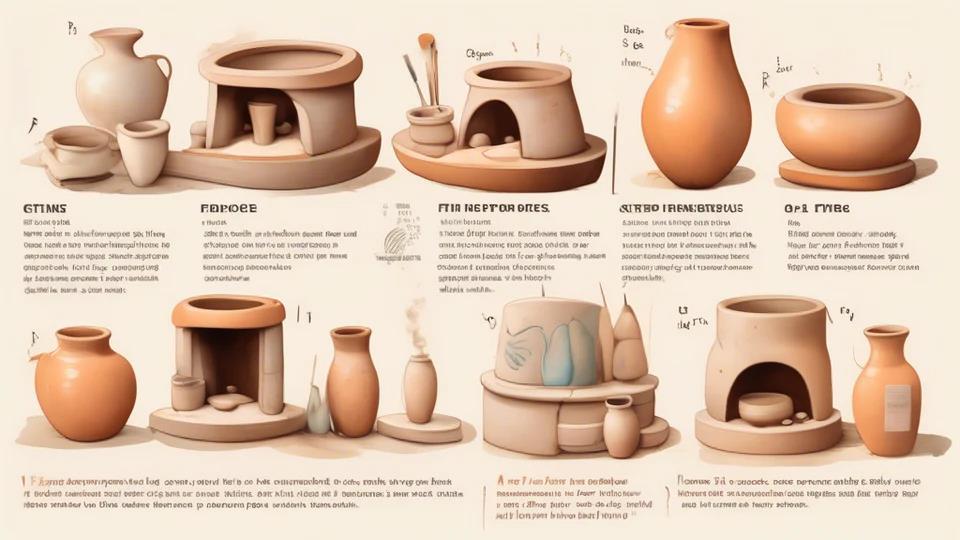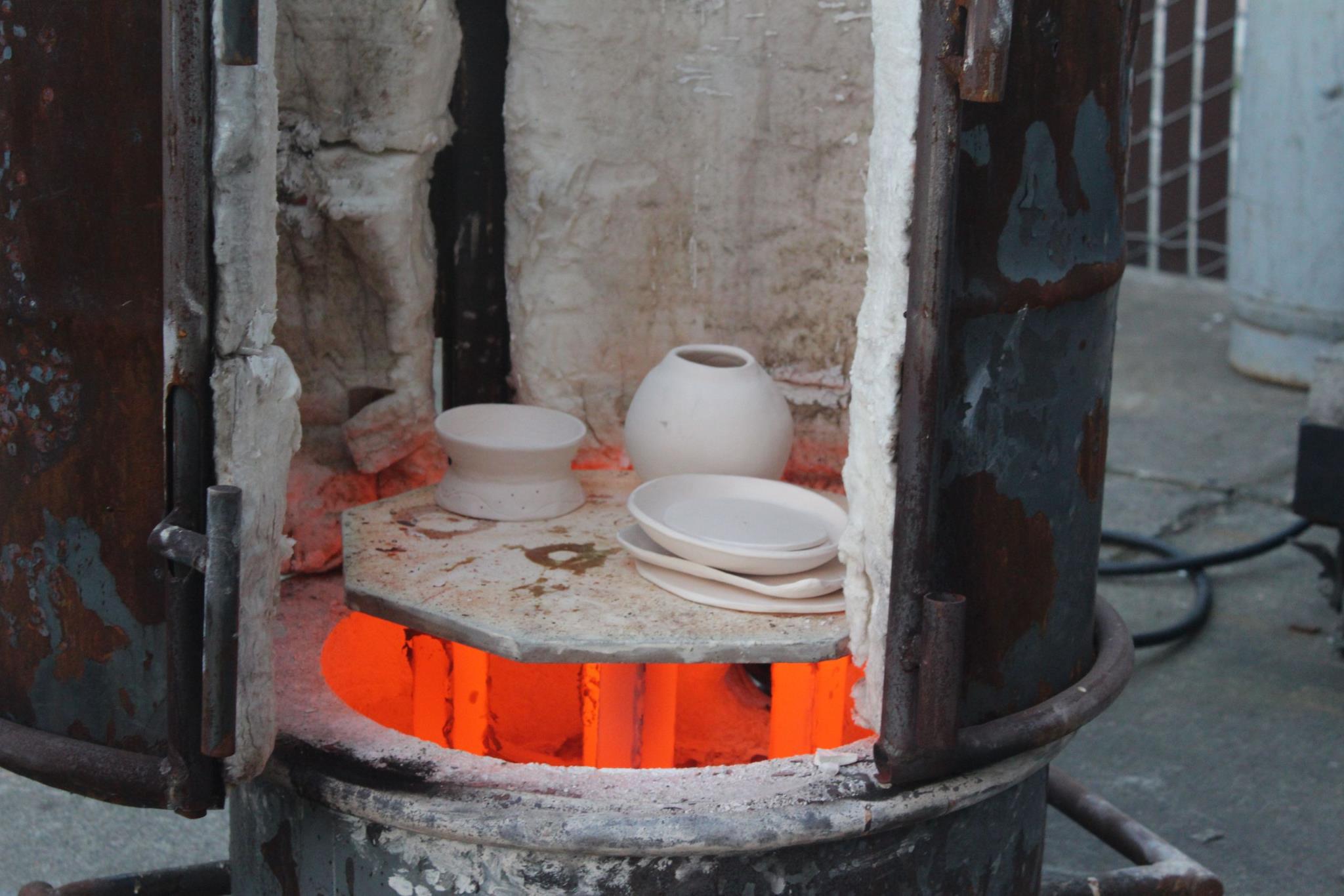What Ceramics Require Kiln: Find The Right Pottery Kiln At Your Home
Time of issue: 2024-10-10 16:13:30- Introduction to Ceramic Kiln Firing
- The Kiln Firing Process Explained : Which One Is Right for You?
- What Are the Different Types of Kilns Available?
- The Role of Kiln in Enhancing Ceramic Quality
- Advanced Techniques in Kiln Firing
- Choosing the Right Kiln for Your Ceramic Projects
- Safety Measures and Maintenance Tips for Kiln Use
- Maintenance and Care for Your Pottery Kiln
- Conclusion : Making the Right Choice for Your Pottery Journey

What ceramics require pottery kiln at your home? This is a common question among both budding and experienced ceramic enthusiasts. Kilns are essential for processing various types of ceramic materials, as they provide the high temperatures needed to transform soft, workable clay into sturdy, durable art or utility objects. The process of firing in a kiln helps to vitrify pottery and sculpture, making it stronger and suitable for daily use. Whether you’re working with earthenware, stoneware, or porcelain, a kiln is a crucial tool for achieving the desired durability and finish.
At Global Reach Ceramic offers a variety of options for those looking to get a kiln for their pottery needs., we leverage this ancient yet ever-evolving technology to create exquisite ceramic pieces that stand the test of time. Discover more about the fascinating world of ceramics and how our expertise can help enhance your crafting journey.
Introduction to Ceramic Kiln Firing

When it comes to making ceramics, kiln firing is the key to transforming raw clay into durable, finished pieces. But what exactly is kiln firing, and you’ll need to get the right tools for your pottery wheel. why is it so important for ceramics?
Let’s dive into the details to help you understand how it all works.
What Are Ceramics and Why Do They Need Firing?
Ceramics are materials made from clay that are permanently changed when heated at high temperatures. If you've ever molded your own pottery and watched it transform through the heat of a kiln, you've seen the magic of ceramic firing. This process is crucial because it turns the soft, fragile clay into hard, durable material. The heat causes chemical changes that ensure your pottery can handle everyday use, whether it's holding your morning coffee or decorating your shelf.
How Does Firing Transform Clay into Durable Pottery?
The transformation of clay into durable pottery through firing is a fascinating process. When you fire clay in a pottery kiln, the heat ramps up to temperatures where the clay particles begin to fuse together, often reaching cone specifications. This is what turns your piece from a brittle, dried clay object into a strong, vitrified pottery item that rings true when tapped. It’s like baking a cake - you start with soft batter and end up with a firm, delicious product!
What Types of Ceramics Require Different Firing Temperatures?
Different types of ceramics require different firing temperatures to achieve their best qualities. Earthenware, the oldest form of pottery, needs a lower temperature and is perfect for colorful, decorative items. Stoneware, on the other hand, is fired at a higher temperature and results in a denser, more durable ceramic, ideal for dinnerware. Porcelain, the finest clay, requires the highest temperatures, creating a light, glass-like finish that is truly beautiful. Understanding these needs can help you choose the right clay and firing schedule for your projects.
What Is Kiln Firing?
Kiln firing is the process of heating clay objects in a kiln to high temperatures, typically between 1,000 and 1,600 degrees Celsius, depending on the type of clay and ceramic you're working with. This process hardens the clay, making it strong and durable, which is essential for creating pottery at home. During firing, chemical changes take place in the clay that permanently change its structure, turning it from a malleable material into something solid and waterproof.
Types of Ceramics That Require Kiln Firing
Almost every type of ceramic requires kiln firing, from basic pottery to more advanced materials like porcelain, especially in a first kiln. Earthenware, for example, is typically fired at lower temperatures and is a bit more porous, making it ideal for decorative items or pottery that will be glazed. Stoneware, which is much stronger and less porous, requires higher kiln temperatures and is often used for dinnerware and mugs.
Porcelain, on the other hand, is the most refined type of ceramic and requires the highest firing temperatures. Its smooth, glass-like finish is a result of being fired in the kiln at very high temperatures, which is why it’s so popular for fine dishes and decorative art. No matter what type of ceramic you’re working with, using a kiln is essential to achieve the desired result.
The Kiln Firing Process Explained : Which One Is Right for You?
Now that we’ve covered what kiln firing is and why it’s necessary, let’s take a closer look at how the process actually works in a small kiln. While it may seem like a simple matter of putting your clay into a kiln and waiting, make sure the kiln is properly prepped to ensure your ceramics turn out just right.
Preparing Your Ceramics for the Kiln
Before firing your ceramics, preparation is key. First, you need to make sure the clay is completely dry—this stage is often called “bone dry.” Any remaining moisture in the clay could cause it to crack or even explode in the kiln due to the rapid expansion of water vapor when exposed to high heat. Drying your pieces thoroughly can take anywhere from a few days to a couple of weeks, depending on the size and thickness of the piece.
You’ll also want to clean up the edges and surface of your ceramic piece. Any sharp edges or rough spots can become even more pronounced after firing, so it’s a good idea to smooth everything out before putting your ceramics on the kiln shelves.
Understanding Different Kiln Temperatures
Different types of clay and glazes require different firing temperatures, which is why it's important to know the specifics before you begin. Earthenware is generally fired at lower temperatures, around 1,000°C, while stoneware and porcelain need to be fired at much higher temperatures, typically between 1,200°C and 1,400°C.
There are two types of kiln firing processes: bisque firing and glaze firing, which are essential for any pottery supply. Bisque firing is the first round, done at lower temperatures to remove any remaining moisture and harden the piece. Glaze firing is the second round, done at higher temperatures after the glaze has been applied, and it’s firing that gives ceramics their final finish. This second firing melts the glaze onto the surface of the ceramic, creating a smooth and finished look. Knowing the right temperatures for your clay and glaze will ensure your ceramic piece turns out as intended.
What Are the Different Types of Kilns Available?

When it comes to firing ceramics, the kiln you choose plays a pivotal role. There are several types of kilns to choose from, each with its unique benefits. Electric kilns are perhaps the most popular for beginners due to their ease of use and control. Gas kilns offer a traditional approach with the ability to produce "reduction" atmospheres, which can affect the colors and glazes. Lastly, wood-fired kilns bring a historical aspect and unique aesthetics to the pottery, but they require more attention and labor.
Electric Kilns for Beginners – Pros and Cons
Electric kilns are the most popular option for beginners, primarily because they’re easy to use and maintain. They run on electricity, which means they’re straightforward to control and don’t require much effort to keep consistent temperatures. Most electric kilns also come with built-in digital controllers, allowing you to set specific firing programs that automatically adjust the kiln’s temperature over time.
These kilns are ideal for hobbyists and small studios since they are usually compact and more affordable than other types. While they may not give the same natural results as a wood-fired or gas kiln, electric kilns are perfect for people who are just starting their ceramics journey.
Gas Kilns – Pros and Cons
Gas kilns offer more control over the firing atmosphere, which can be essential for certain types of ceramics. The ability to adjust oxygen levels inside the kiln allows for special effects, like reduction firing, where less oxygen results in unique color changes and finishes. However, gas kilns are more difficult to control than electric kilns, requiring a bit more skill to manage the temperature and atmosphere.
On the flip side, gas kilns are more expensive to operate and maintain. You’ll also need proper ventilation, as the gas produces fumes that can be hazardous if not managed correctly. But for serious ceramic artists looking for greater control over the look of their pieces, gas kilns offer advantages that electric kilns simply can't provide.
Wood-Fired Kilns: A Traditional Approach
For those who love tradition and hands-on control, wood-fired kilns are a rewarding, though labor-intensive, option. These kilns have been used for thousands of years and are prized for the unique results they produce. Because the firing temperature can be uneven, the ceramic pieces often develop rich, unpredictable variations in color and texture. This is part of the charm of wood-fired ceramics.
That said, operating a wood-fired kiln requires a lot of effort. You’ll need a constant supply of wood and a lot of time and attention to ensure the fire stays at the correct temperature. These kilns are generally used by ceramic artists who appreciate the aesthetic qualities they offer, despite the challenges involved in using them.
The Role of Kiln in Enhancing Ceramic Quality
Understanding the role of the kiln is crucial not just for hardening ceramics but for ensuring each piece meets high standards of quality and durability.
Impact of Kiln Firing on Durability
Kiln firing is not just a process; it's a transformation. The high temperatures in a kiln cause vitrification, where the particles within the clay body fuse together, creating a dense, sturdy material. This vitrification process is what gives ceramics their incredible durability and resistance to water and wear. Without sufficient firing, ceramics remain porous and fragile, prone to breaking and absorbing liquids, which can compromise their longevity and functionality.
Aesthetic Benefits of Proper Kiln Firing
Beyond strength, the aesthetic appeal of ceramics is largely attributed to how they are fired in a raku kiln. Proper kiln firing can enhance color vibrancy and finish, allowing glazes to mature and develop rich, deep hues that are visually stunning. This is why controlling the kiln atmosphere and temperature is essential for achieving the desired artistic effects, turning simple clay objects into eye-catching pieces of art.
Advanced Techniques in Kiln Firing

To push the boundaries of ceramic artistry, various advanced kiln firing techniques have been developed, each offering unique characteristics and results.
Raku Firing: A Unique Ceramic Firing Technique
Raku firing is a dramatic and fast technique that involves removing pottery from the kiln while it's red-hot and placing it into materials that catch fire, like sawdust or paper. This process creates intense reductions in a raku kiln, causing the metals in the glaze to react and giving the surface a distinctive, crackled look with lustrous colors. It’s a favorite among potters who value spontaneous and unique textures and effects in their work.
Sintering in Kiln Firing: What You Need to Know
Sintering, a process often used in industrial ceramics, involves compacting and forming a solid mass of material by heat without melting it to the point of liquefaction. In the context of pottery, sintering helps achieve uniform densities and strength, especially in porcelain and bone china, making it crucial for producing high-quality, fine ceramics that are both durable and delicate in appearance.
Choosing the Right Kiln for Your Ceramic Projects
What Factors Should You Consider When Choosing a Kiln?
Selecting the right kiln for your ceramic projects involves several important factors, including whether you’re looking for a small kiln or a larger model. First, consider the type of clay you plan to use and the temperatures it requires. Next, think about the size of the kiln; ensure it fits the volume of work you produce while fitting into your workspace. Finally, energy requirements and cost should influence your decision, as kilns can vary significantly in how much they cost to purchase and operate.
How Do Your Ceramics' Firing Requirements Influence Your Choice?
Your ceramics' firing requirements are central to choosing the right kiln. If you work primarily with porcelain or stoneware, you’ll need a kiln that reaches high temperatures. On the other hand, if you’re focusing on earthenware, a lower temperature kiln may suffice. Additionally, if you desire specific effects like reduction glazes, a gas kiln might be necessary, whereas electric kilns Ceramic kilns, especially top-loading models, are known for their ease of temperature control and consistency, which is crucial for successful pottery making.
What Is Your Budget for a Pottery Kiln?
Budget is a critical consideration when deciding to get a kiln for your ceramic projects. Costs can range from a few hundred dollars for a little kiln to several thousand dollars for a top-loading model. Factor in not only the upfront cost but also the long-term expenses such as energy consumption, maintenance, and repair costs. Smaller, more energy-efficient kilns may save money over time, despite a higher initial investment.
Top Kiln Brands and What Makes Them Stand Out
Brands like Skutt and L&L offer reliable, high-quality electric kilns that are favorites among hobbyists and professionals alike. For those looking for something more robust, Paragon and Olympic kilns provide excellent gas and wood-fired options. These brands are known for their durability, range of sizes and features, and excellent customer support, making them a solid choice for serious ceramic artists.
Safety Measures and Maintenance Tips for Kiln Use
Operating a kiln safely is non-negotiable, and maintaining it well ensures it continues to function at its best, providing the consistent results you need for your ceramic projects.
What Safety Precautions Should You Take When Using a Kiln?
Safety is paramount when operating a kiln. Ensure that your kiln is installed in a well-ventilated space to prevent the buildup of harmful fumes, particularly if you’re using a large kiln. Always wear protective gear, such as Heat-resistant gloves are essential when you unload the hot pieces from the kiln. and eye protection, when handling hot ceramics or the kiln itself. Furthermore, keep a set of heat-resistant gloves handy when you unload your kiln. fire extinguisher Make sure you’re familiar with the kiln’s operation manual to prevent accidents while you make pottery.
How Much Space Do You Need for a Pottery Kiln?
The space required for your kiln depends on the kiln's size and the necessary safety clearances around it. A standard home studio kiln requires enough room for heat dissipation and safe operation, typically a few feet around each side. Ensure your space is free of flammable materials and provides adequate air circulation to manage the heat output during firing.
What Are the Local Regulations Regarding Kiln Use?
Before installing a kiln, make sure the kiln complies with your local building codes and zoning regulations. Some areas have specific requirements regarding the use of high-temperature equipment in residential areas, including permits, installation inspections, and environmental regulations. Understanding and complying with these rules can help you set up your kiln without legal hassles and ensure community safety.
Maintenance and Care for Your Pottery Kiln
What Regular Maintenance Does a Kiln Require?
Regular maintenance is key to keeping your kiln in top condition, especially if you plan to buy a kiln for your pottery projects. This includes periodic checks of the kiln’s elements, Thermocouples are essential for monitoring the temperature in a ceramic kiln., and wiring to ensure they are not worn out or damaged. Cleaning the interior of the kiln regularly to remove any debris or kiln wash is also crucial. Additionally, inspect the lid or door seals to make sure they are intact, as any leaks can affect the firing atmosphere and energy efficiency.
How Can You Extend the Lifespan of Your Kiln?
To extend the lifespan of your kiln, follow a consistent maintenance schedule. Avoid overloading the kiln, as uneven heating and excessive weight can stress the structure and elements. Also, ensure that the kiln is properly ventilated to prevent the buildup of heat and fumes, which can degrade its components. Gradual heating and cooling cycles can help minimize the thermal stress on the ceramics and the kiln itself.
What Common Problems Should You Look Out For?
Be on the lookout for several common kiln problems:
- Uneven Heating: This might indicate failing elements or issues with the kiln’s programming.
- Cracks in the BrickThese can develop from thermal stress or physical damage to the ceramic kiln.
- Malfunctioning Controllers: These can lead to over or under-firing, which can ruin your ceramics. Addressing these issues early can make sure the kiln operates efficiently and prevent more significant problems down the line.
Conclusion : Making the Right Choice for Your Pottery Journey
Understanding what ceramics require kiln firing is essential for anyone looking to delve into the art of pottery or enhance their ceramic crafting skills. At Global Reach Ceramic offers a variety of options for those looking to get a kiln for their pottery needs., we are committed to providing you with not only the knowledge but also the finest materials and equipment necessary for kiln firing. Our top-notch ceramics and advanced kiln technologies are designed to ensure that each piece you create is not just beautiful but built to last.
As you explore the transformative power of kiln firing, consider how the right tools and techniques could elevate your ceramic projects. Are you ready to discover the perfect kiln that will bring your artistic visions to life? Visit us at Global Reach Ceramic for more insights and inspiration.
What unique ceramic project are you planning to fire next in your glass kiln? Let us know in the comments—we’re excited to see what you create!
RECENT POSTS
- How to Clean Ceramic Planters and Improve Their Lifespan?
2025-11-17
- 15 Best Ceramic Holiday Gift Ideas for 2025: Thoughtful, Elegant & Heartfelt
2025-11-17
- Stoneware vs Porcelain vs Earthenware: Quick Decision Guide
2025-10-09
- Are Ceramic Glazes Food Safe? The Truth Behind the Shine
2025-10-09
- Christmas Decoration Trends That Wow Every Guest
2025-09-18
- Halloween Decoration Trending Ideas with Ceramics For 2025-26
2025-09-18
- Top 10 Custom Plant Pots: Add Personality to Your Plants
2025-09-18
- Custom Incense Holders : The Ultimate Guide in 2025
2025-08-22










